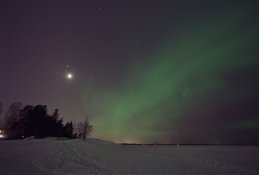JaZ99
Member
- Joined
- Jan 6, 2009
- Messages
- 68
- Format
- Medium Format
Hi, I'm going to visit Norway next month to shoot some Northern Lights, if I get lucky.
I've read all info I could get on the Internet, but those tips were meant for digital shooters.
Some of them are good for film, too, like keep the exposure below 30s, bring fast lens, etc.
However, I'm taking with me my trusty Mamiya 645 gear only, so I'm looking for advice regarding
which film is the best for the job, and how should I meter and expose it.
Right now in my freezer I have Velvia RVP50, E100G, E100VS, Provia 100F, Provia 400X, Portra 400, and Ektar 100.
My favourite film is E100G, but I've never shoot it at night (I've read about weird color shift when exposition time is longer than 10 seconds).
I appreciate any advice.
JaZ
I've read all info I could get on the Internet, but those tips were meant for digital shooters.
Some of them are good for film, too, like keep the exposure below 30s, bring fast lens, etc.
However, I'm taking with me my trusty Mamiya 645 gear only, so I'm looking for advice regarding
which film is the best for the job, and how should I meter and expose it.
Right now in my freezer I have Velvia RVP50, E100G, E100VS, Provia 100F, Provia 400X, Portra 400, and Ektar 100.
My favourite film is E100G, but I've never shoot it at night (I've read about weird color shift when exposition time is longer than 10 seconds).
I appreciate any advice.
JaZ













